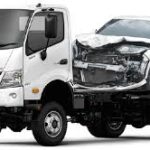Selling a car that does not start can feel like a difficult task. Many people believe that once a vehicle becomes inoperable, it loses all its worth. But the truth is, even a non-starting car holds value. It might not be ideal for a regular buyer, but there are other practical solutions.
What Makes a Car Inoperable?
A car becomes inoperable when it fails to start or move. This could be caused by a dead battery, a failed engine, faulty transmission, or electrical problems. Sometimes, it could be due to long-term neglect or damage from an accident. In many cases, repairing the vehicle costs more than what the car is worth.
Owners are often left with a vehicle that takes up space and serves no purpose. Leaving it idle in a garage or driveway can lead to rust, fluid leaks, and more structural problems. Selling it becomes the most logical step.
Challenges of Selling a Non-Running Car
The biggest hurdle is finding someone who wants to buy a vehicle that does not run. Most private buyers are looking for something they can drive straight away. This rules out the usual platforms like online marketplaces or classified ads.
In addition, if the car has been sitting for a long time, it might not have registration or valid paperwork. This adds another layer of difficulty. Towing the car to a potential buyer or dealer also adds cost and time to the process.
Steps to Sell a Car That Does Not Start
Selling an inoperable car can still be done with a clear plan. Below are steps that can help:
1. Assess the Vehicle’s Condition
Before listing the car, understand what is wrong with it. You can either try to get a diagnosis from a mechanic or inspect basic signs like whether the battery is dead or if the engine shows any movement. Take note of physical damage, rust, leaks, or missing parts.
2. Collect All Relevant Documents
Even if the car is not running, having the paperwork in order helps. This includes registration papers, service history, and ownership documents. A buyer might still want proof of ownership, especially if the car will be scrapped or used for parts.
3. Decide on a Selling Method
You have a few choices when it comes to selling an inoperable car:
-
Selling to wreckers or dismantlers – These businesses buy cars for parts or metal. They usually accept vehicles in any condition.
-
Selling for scrap – Scrap yards pay based on the weight of the metal and the current market rates.
-
Specialised car buyers – Some companies offer payment for damaged or inoperable vehicles and handle collection themselves.
4. Take Clear Photos
Photographs help show the current condition of the vehicle. Take shots of the front, rear, sides, interior, and any damage. Mention clearly that the car does not start, so the buyer knows what to expect.
5. Be Honest in Your Listing
It is important to be open about the fact that the car does not run. Mention the condition clearly in your ad or during discussions. This helps avoid confusion later and builds trust with the buyer.
Also visit here: https://www.cashforcarnearby.com.au/cash-for-cars/balmain/
Why Some Buyers Are Still Interested
Not every buyer wants a working car. Some are only after parts, especially if the vehicle is a model that is hard to find. Mechanics, car rebuilders, and metal recyclers often seek non-starting cars for these reasons.
Certain makes and models may still have valuable components like the transmission, catalytic converter, alternator, or even wheels. This means your inoperable vehicle could still fetch a fair amount.
Environmental Consideration
Old and inoperable vehicles are not only an eyesore but also pose environmental risks. Leaking oil, battery acid, and coolant can seep into the ground, harming local soil and water systems. Selling such cars to proper buyers ensures they are dismantled safely, and parts are recycled properly.
A Word on Specific Vehicle Types
Some brands, especially those with solid body structures and widely used parts, can bring in more value than expected, even when inoperable. For example, owners looking to get rid of an old vehicle may not be aware that there are specific services that deal with certain car types.
There are buyers who offer cash for unwanted Nissan cars regardless of whether they start or not. These cars often have parts in demand due to their popularity in Australia. Selling them in non-running condition still makes sense and can save time and effort compared to fixing them.
Final Thoughts
Selling a car that does not start is not impossible. It takes the right approach, clear communication, and choosing the right platform. Avoid spending on costly repairs just to make the car sellable. Instead, look for buyers who accept vehicles in their current state. With proper preparation, you can turn a non-starting car into something useful, even if it is just for parts or scrap.
By following these steps, you save space, avoid future problems, and put some money back in your pocket—all while doing something responsible with your vehicle.

